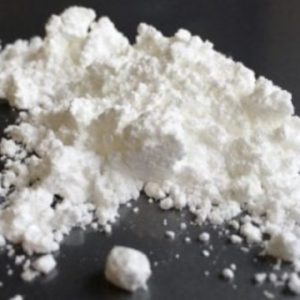4-HO-MET (4-Hydroxy-N-methyl-N-ethyltryptamine) – Detailed Overview for Research and Analysis
4-HO-MET, also known as 4-Hydroxy-N-methyl-N-ethyltryptamine, is a synthetic psychedelic compound belonging to the tryptamine class. Structurally related to psilocin (the active metabolite of psilocybin found in magic mushrooms), 4-HO-MET has gained attention among researchers and psychopharmacologists for its unique psychoactive profile, potent visual effects, and short-to-moderate duration of action.
With growing interest in novel tryptamines, 4-HO-MET remains a notable subject for scientific exploration, particularly in studies focused on serotonergic receptor interactions, perceptual alteration, and psychological effects associated with psychedelic substances.
Chemical Profile and Structure
-
Chemical Name: 4-Hydroxy-N-methyl-N-ethyltryptamine
-
Common Names: 4-HO-MET, Metocin
-
Molecular Formula: C13H18N2O
-
Molecular Weight: 218.29 g/mol
-
IUPAC Name: 3-[2-(ethyl(methyl)amino)ethyl]-1H-indol-4-ol
-
Chemical Class: Tryptamine
4-HO-MET is a hydroxylated analogue of 4-hydroxy-N-methyl-N-ethyltryptamine, and both are close structural relatives of psilocin (4-HO-DMT). The compound’s chemical similarity to natural tryptamines gives it a comparable pharmacological mechanism, acting primarily as a serotonin receptor agonist, especially at the 5-HT2A receptor — the same receptor implicated in the psychedelic effects of LSD, psilocybin, and DMT.
Origins and Development
4-hydroxy-N-methyl-N-ethyltryptamine was first synthesized by Alexander Shulgin, the pioneering chemist and author of TiHKAL: Tryptamines I Have Known and Loved. In his documentation, Shulgin described 4-HO-MET as producing effects similar to psilocybin, but with a more vivid visual and less introspective character. Since its synthesis, the compound has been used primarily in psychopharmacological research and analytical chemistry, offering valuable insights into structure-activity relationships within the tryptamine family.
Pharmacology and Mechanism of Action
Like other substituted tryptamines, 4-hydroxy-N-methyl-N-ethyltryptamine acts as a partial agonist at serotonin receptors, particularly 5-HT2A, 5-HT2C, and 5-HT1A. Activation of these receptors in the brain is believed to induce altered sensory perception, emotional intensification, and changes in cognitive processing characteristic of psychedelic experiences.
At the molecular level, the hydroxy group at the 4-position of the indole ring enhances its similarity to psilocin, contributing to its affinity for serotonergic pathways and its psychedelic potency.
Researchers studying 4-HO-MET often focus on its:
-
Binding affinity across serotonin receptor subtypes
-
Metabolic pathways and elimination half-life
-
Potential therapeutic implications in neuroscience
These parameters make 4-hydroxy-N-methyl-N-ethyltryptamine a valuable compound in research settings, particularly for studies investigating consciousness, perception, and neurochemical modulation.
Visual and Sensory Characteristics
In anecdotal research and controlled trials, 4-HO-MET is known for producing:
-
Intensified visual patterns and color enhancement
-
Mild to moderate euphoria
-
Altered time perception
-
Enhanced tactile sensitivity
-
Light body energy or stimulation
Unlike some other tryptamines that induce strong introspection or emotional depth, 4-hydroxy-N-methyl-N-ethyltryptamine tends to produce more externally oriented and visually dynamic experiences, making it a unique research analog for comparative psychedelic studies.
Duration and Dosage (for Research Contexts Only)
Reports from research and analytical review suggest the onset of 4-hydroxy-N-methyl-N-ethyltryptamine’s effects occurs within 20 to 45 minutes, peaking at around 1 to 2 hours, and subsiding over 4 to 6 hours.
Although 4-HO-MET is not approved for human consumption, laboratory and analytical observations typically note that it exhibits dose-dependent effects:
-
Low-range exposure: light visual enhancement, subtle mood alteration
-
Moderate-range exposure: open-eye visuals, synesthesia, mood elevation
-
High-range exposure: immersive visuals, euphoria, altered spatial perception
Researchers must exercise strict laboratory safety standards and ensure accurate volumetric measurement during any study involving this compound.
Legal Status and Compliance Notice
The legal classification of 4-HO-MET varies across jurisdictions. In many countries, it remains unscheduled but controlled under analogue laws, meaning it may be regulated as a chemical analogue of psilocin or other tryptamines.
Before conducting any form of research, users must confirm the legal standing of 4-hydroxy-N-methyl-N-ethyltryptamine within their region or institution. This compound is intended strictly for scientific, analytical, or forensic research and not for human or veterinary use.
Storage and Stability
For optimal stability, 4-HO-MET should be stored in:
-
A cool, dry environment
-
Airtight, light-resistant containers
-
Temperature-controlled conditions, ideally below 20°C
Proper storage ensures chemical integrity and accurate results during analytical testing.
Why Researchers Choose 4-HO-MET
-
Structural similarity to psilocin – making it ideal for comparative studies.
-
Predictable pharmacological response – useful for mapping receptor pathways.
-
Shorter duration – allowing easier monitoring in controlled settings.
-
Well-documented background – detailed in Shulgin’s chemical literature.
Because of these attributes, 4-HO-MET continues to be a highly regarded tryptamine in modern psychedelic research.
Conclusion
4-HO-MET stands at the intersection of chemistry, neuroscience, and pharmacology, offering a compelling opportunity for scientists to explore the complex relationship between serotonin signaling and human perception. Its structural resemblance to natural tryptamines, combined with manageable duration and potency, makes it a preferred research chemical for those studying psychedelic mechanisms and receptor dynamics.
When sourced responsibly and used within proper legal and ethical boundaries, 4-HO-MET serves as a valuable compound for analytical and psychopharmacological research aimed at deepening our understanding of the human mind and its neurochemical foundations.






Freeman –
Easy to navigate website and order what you want. Competitively priced products.
Swift delivery and very well packaged. Overall extremely pleased 👍
Ramsey –
Excellent service. Easy website to use My items arrived quickly and well wrapped.
TAM –
Grade A+++++ Wow i am short of words. Haha i could not imagine i will one day get 4-HO-MET. TAM squad
parmen –
Excellent price, very good quality and delivery.